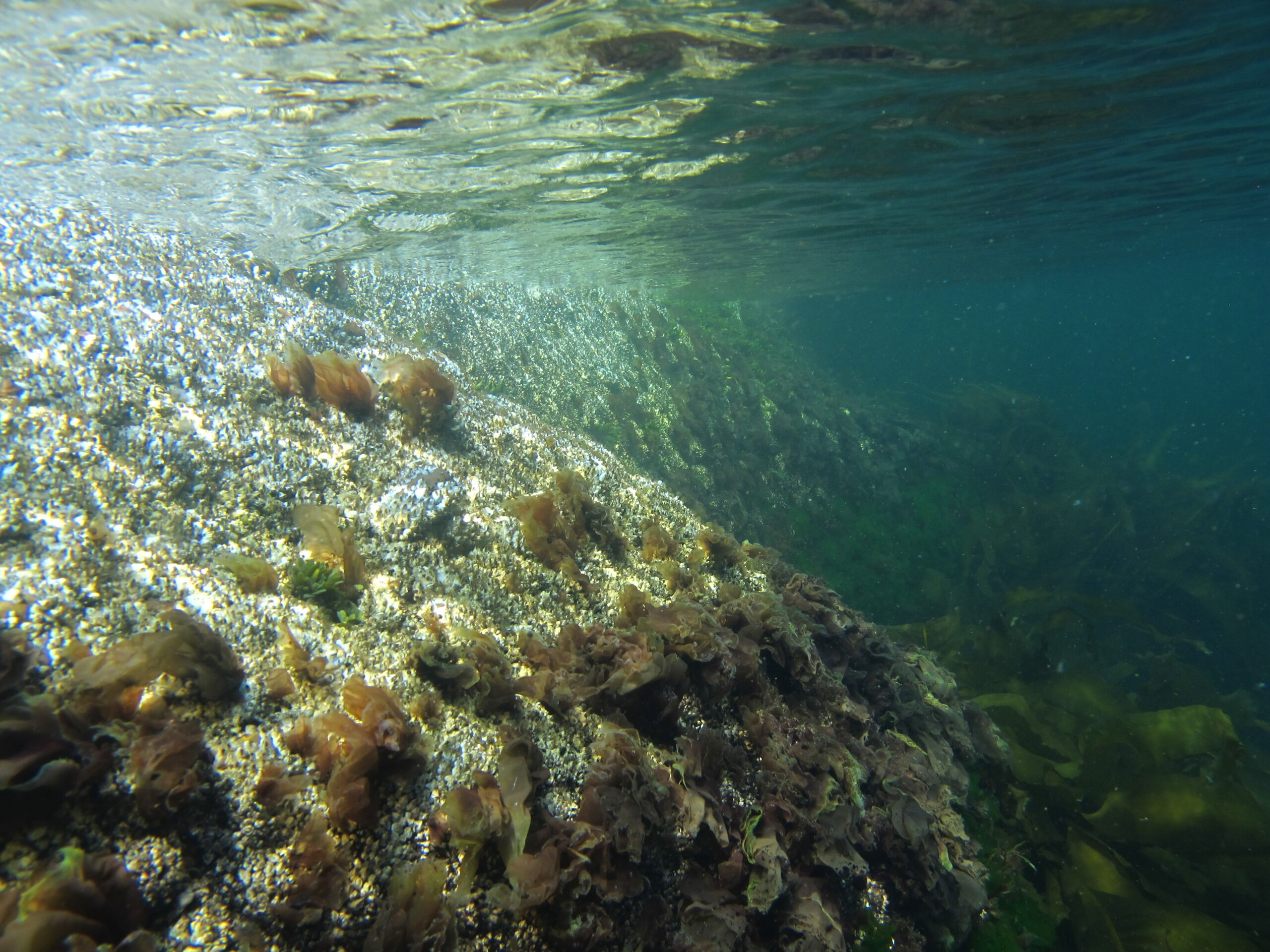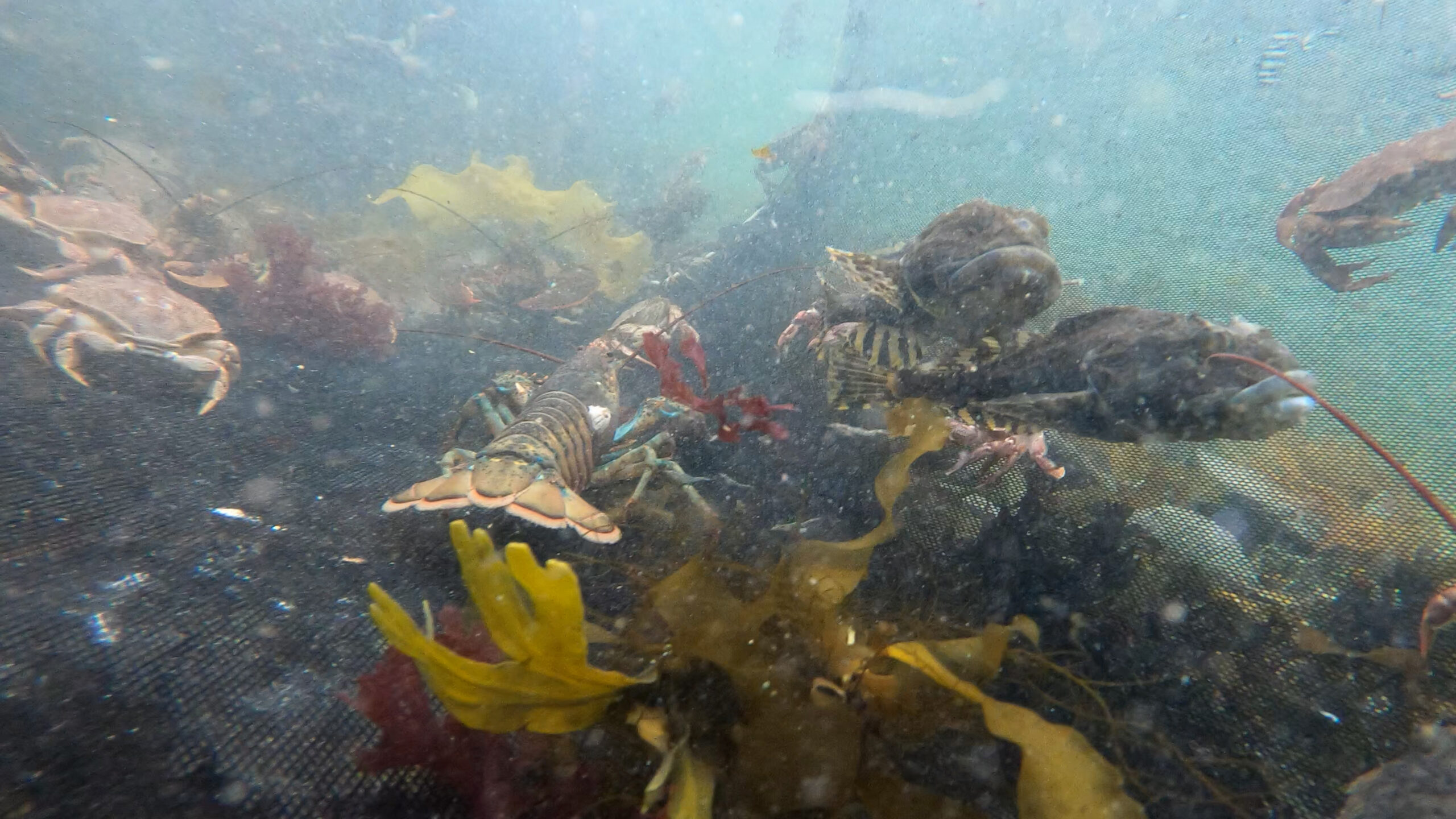
SIZE:
Up to 50 cm.
LIFE EXPECTANCY:
Less than a year.
LIFE CYCLE:
Nori can reproduce in two ways:
- A neutral cell dissociates from the alga, germinates and forms a new individual.
- A complex sexual reproduction in which female cells are fertilized by male cells. Spores, called carpospores, are released after fertilization of the egg. As they germinate, the spores become conchocelis, a microscopic filamentous form. The conchocelis, in turn, releases spores, which disperse, attach to the substrate and develop into a new male or female nori.
Growth starts at the tips, mainly in summer. When young, nori has a greenish colour, later turning red to brown. This alga is most visible in spring and summer.
Mother of the Sea
Given its complex reproductive cycle, the Japanese could not figure out how to make their traditional nori cultivation more productive. In 1949, British botanist Kathleen Drew-Baker discovered the reproduction process of this alga, paving the way for the artificial algaculture of this species. In 1963, a statue of the scientist, who is now referred to as “Mother of the Sea,” was erected in southern Japan, and an annual festival is held in her honour for having saved the nori industry.
The fronds of this algae are smooth, very fine and translucent, a little like sea lettuce. They vary in shape and are as wide as they are long. Their colour ranges from red to dark brown. At low tide, the seaweed loses water and turns green or black but regains its colour when the tide comes in.
Nori has no visible stipe. It attaches to the substrate with a holdfast, which can be navel-shaped in the case of Porphyra umbilicalis.
Coastal zone.
Nori does well in the open air. However, it favours shady, rocky environments exposed to waves and currents.
It clings to rocks or other algae in a scattered manner.

Laver seaweed clings to rocks or other algae in a scattered manner.
Credit : Éric Tamigneaux
PREYS:
CO2
Solar energy
PREDATORS:
Herbivorous molluscs
Grazing fish
MACHINES:
Hand harvesting.
REGULATIONS:
Permit required. Cut every other frond at the top of its holdfast with a sharp object. Best harvested between August and October.
Nori is one of the most widely cultivated edible algae in Asia, with crops covering several hundred hectares.
In Québec, teachers and students at ÉPAQ have succeeded in completing, in a laboratory, the life cycle of the nori Wildemania amplissima found in the waters of the St. Lawrence. This paves the way for future cultivation activities.
Frozen and alive
Nori is one of the few algae that can be frozen after being partially dehydrated and not die. This characteristic is very useful for sea farms, which grow nori on nets that can be dried and then stored in freezers. This allows them to be used later if necessary. For example, in the event of bad weather or disease affecting the sea farm, these nori nets can be thawed, rehydrated and then implanted in the farming facilities.
Laver seaweed is a Smarter seafood-listed species.
BENEFITS:
Nori is the richest algae in terms of protein, not to mention the minerals, vitamins and omega-3 fatty acids it also contains. Some of its compounds are used in cosmetics for their ability to protect against ultraviolet (UV) rays.
LET’S COOK:
Delicate, woodsy flavour similar to that of tea and dried mushrooms, with a seafood aroma. Its popularity in Japanese cuisine is well established: sushi, ramen, onigiri, omelettes, rice, sauces…
In traditional Welsh cuisine, Porphyra umbilicalis is used to make a puree, which is then fried in bacon fat and served with eggs for breakfast. The dish is called laverbread. An original idea for your next brunch?
OUR CULINARY ADVICE:
- Raw nori is difficult to chew, so it is not really recommended. It is best to toast it before eating, or to use its dried form.
The waters of the St. Lawrence are known for their good quality. However, as algae absorb the elements present in the water to grow, it is preferable to ensure that the harvesting site is clean before eating this species fresh.
A long wait
In eighth-century Japan, eating nori was a privilege reserved for nobles because of its limited harvest. Initially consumed as a paste, dried nori leaf was finally produced in the Edo period, around 1750, making it accessible to the general public.






